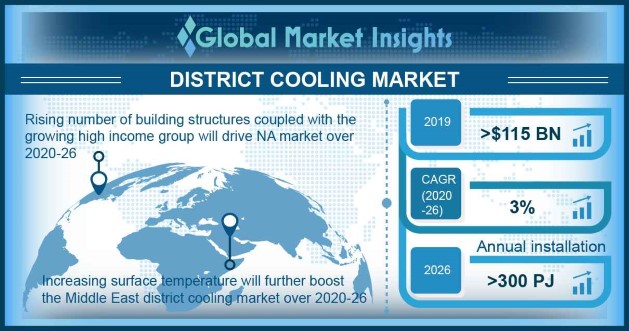District cooling market to be driven by low carbon emitting cooling solutions, Middle East economies to emerge as major revenue pockets over 2018-2024
Publisher : Fractovia | Published Date : 2018-07-04Request Sample
The alarming rate at which global warming has increased has indeed strengthened district cooling market trends. Though the concept of district cooling technology has been around for the last 120 years, district cooling industry has gained traction only in the recent years as the world has started to follow the example set by nations such as Singapore, Dubai and Paris where district cooling has been deployed to develop sustainable cities. District cooling is proliferating across the globe irrespective of the region’s climate, as even in cooler weather, buildings are often in need of constant cooling due to the presence of computers, lights, and heat generated by human bodies.
China District Cooling Market Size, By Production Technique, 2017 & 2024 (USD Million)

Recently, the Emirates Central Cooling Systems Corporation or Empower, one of the most notable providers of district cooling services, announced that it will be providing 3,900 Refrigeration Tons (RT) district cooling services to Wasl Tower. Notably, the Wasl Tower is a 300 meters tall building and has 64 floors which include offices, residences, and a hotel. Incidentally, district cooling market has a prominent presence in Dubai where Empower currently provides more than 1000 commercial and residential buildings, hospitals, shopping malls, hotels and universities with cooling solutions. These solutions apparently sum up to serving almost 1.34 million RT, providing district cooling services to large-scale real estate projects. Empower presents one example of how district cooling has pervaded the structure of Dubai and how the Middle East is looking to explore more sustainable options for the intense amount of cooling the region requires.
The Dubai Supreme Council of Energy has recognized the potential of district cooling and has been organizing the district cooling sector to yield better results for the betterment of the energy industry. The Council aims to increase investments in the district cooling market from 20% to 40% by 2030 which in turn will not only improve the performance of district cooling operations in the city but also place the city in line to meet the goals set by the ambitious Vision 2030 project undertaken by the country. As sustainability has become the buzzword in the energy industry, promotion for district cooling also supports the Dubai Clean Energy Strategy 2050 which aims at transforming Dubai into an international hub for green economy and clean energy.
As Dubai gears up to be a city with the lowest carbon footprint in the world, other cities are also expansively investing in adopting district cooling as a means of cutting off the harmful effects of chlorofluorocarbons. For instance, the Finnish city of Helsinki has sourced all its heating and cooling needs from a district energy system so efficient that it has been awarded for the high levels of innovation depicted. The utility had set a target to increase cooling capacity to over 200 MW and expand cooling of new residential areas by 2020. The city of Helsinki targets to reach 20% share in renewables in energy production by 2020, thereby proving itself to be a pivotal regional contender in district cooling industry.
The Netherland Environmental Agency estimated that during the period 2000-2100 energy demands for cooling will rise by 72% approximately. If the prevalent decentral cooling technologies are continued to be in use, this development in cooling needs will increase the present levels of CO2 emission and in turn add to the burden of climate deterioration that is the greatest threat to human lives at present. New solutions are emerging in this regard to meet the increasing demand for air conditioning while simultaneously striving to not compromise on environment safety.
Legislations regarding phasing out of traditional refrigerants in U.S. and Europe and organizing efforts for the novel sustainable energy technology in the Middle East is forcing building owners not only to adopt the new cooling solutions but also to replace existing air conditioning systems with new systems that guarantee to decrease the CO2 load of the planet. Driven by the fact that this technology ranks high among low carbon emission trends, district cooling industry size is expected to surpass $140 billion by 2024.